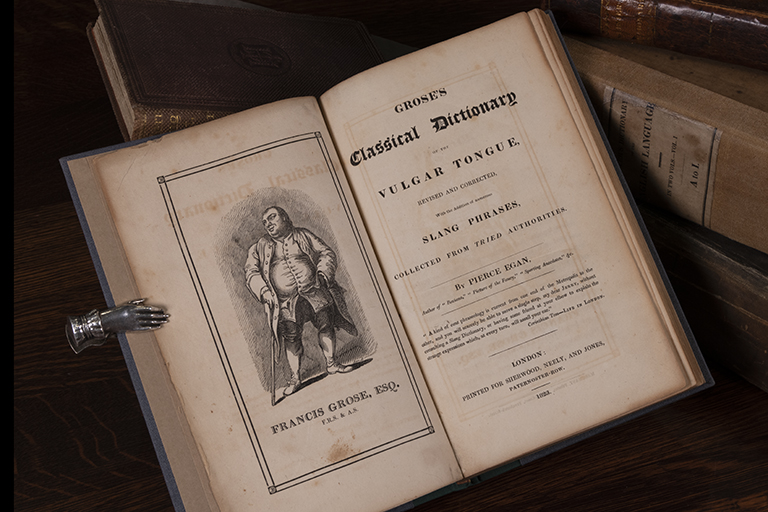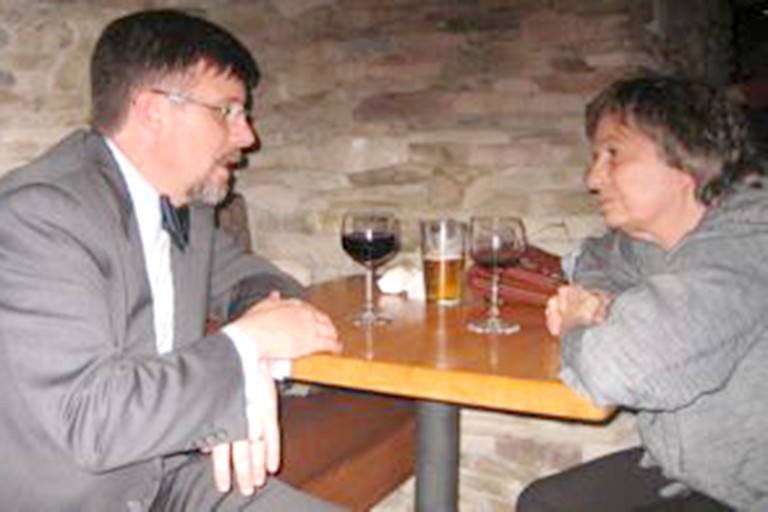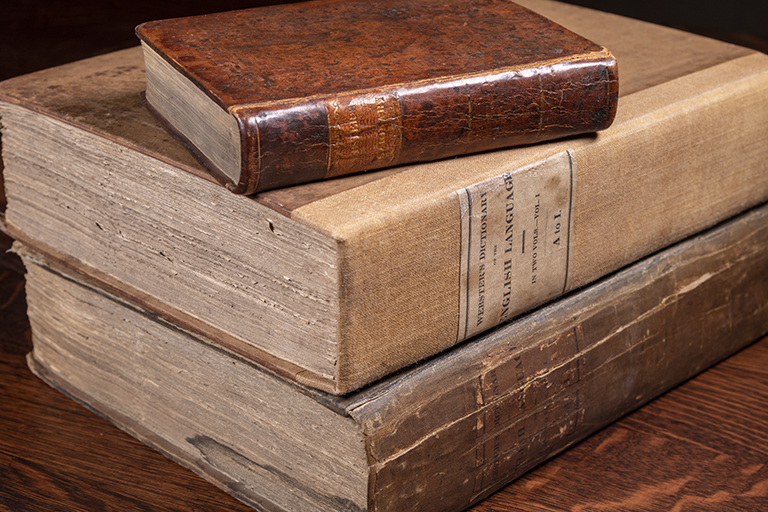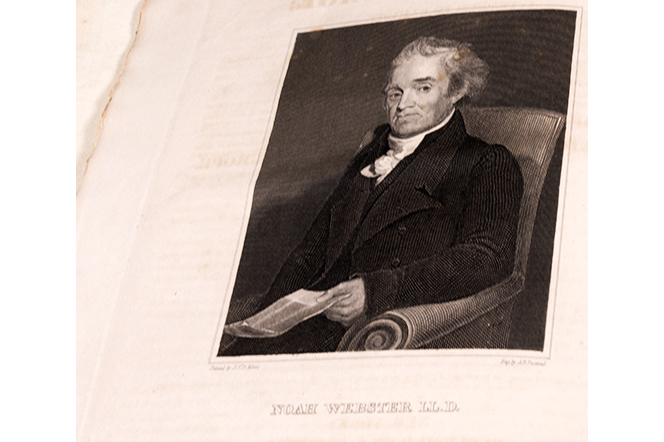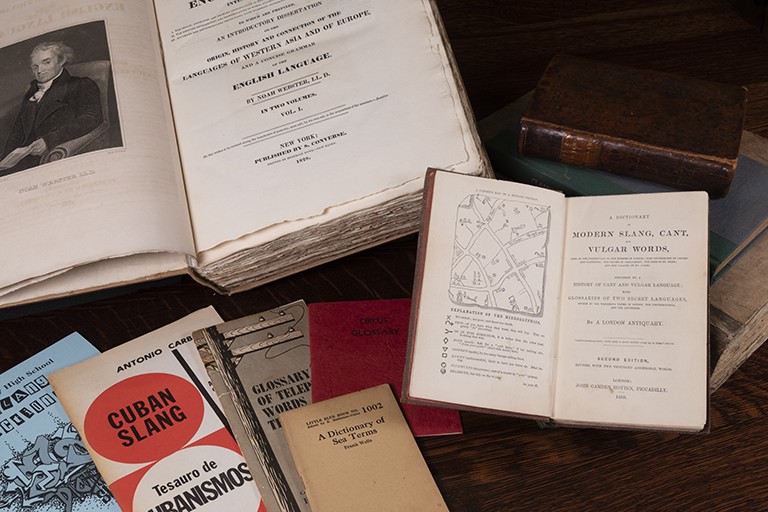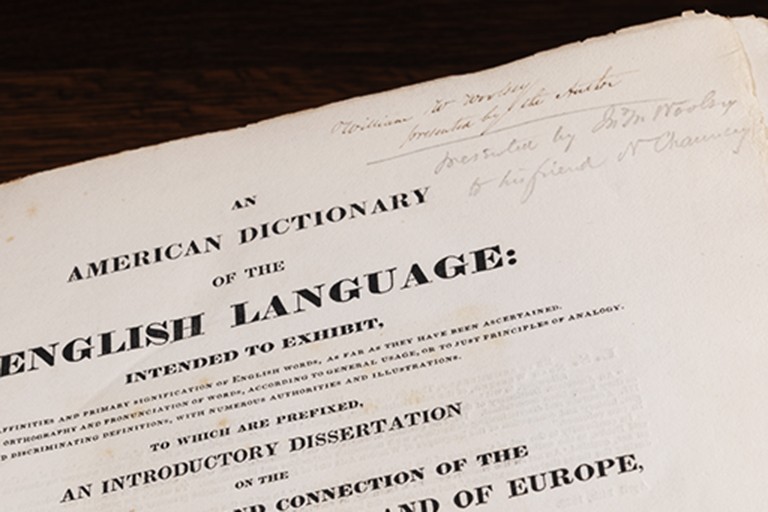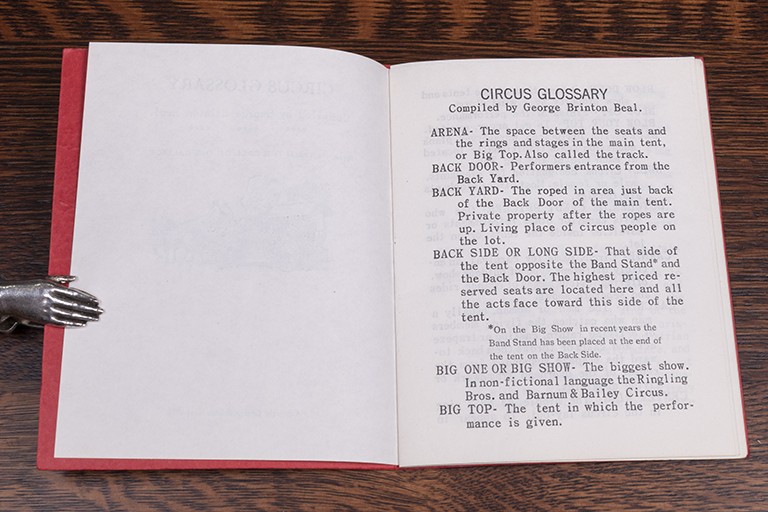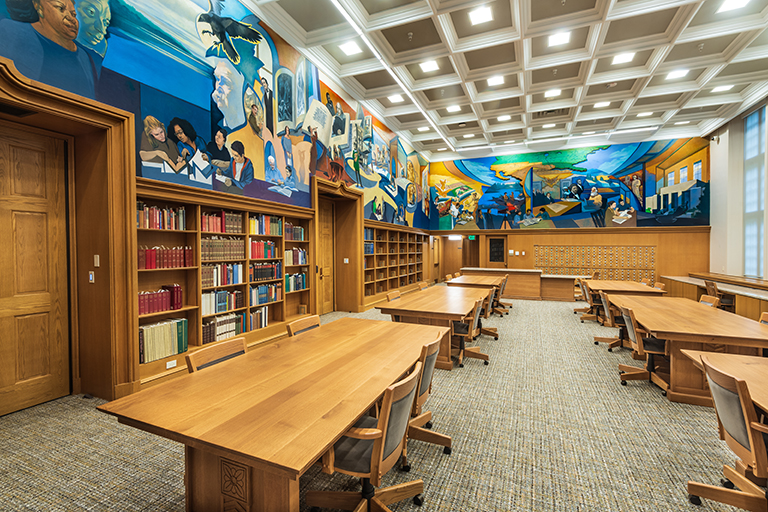
Honoring the Dame of Dictionaries on National Dictionary Day, Oct. 16, 2021
Acquisition of Kripke Collection makes IU’s Lilly Library North America’s Dictionary Destination
When America’s top dictionary editors and language scholars find themselves at a loss for words, where do they turn? For decades the illustrious Dame of Dictionaries, Madeline Kripke, answered the call. Her stockpile of more than 20,000 linguistic books and ephemera was often referred to as the world’s largest and finest dictionary collection. In fact, Michael Adams, Provost Professor and Chair of the English Department at Indiana University Bloomington, says Kripke spent the last decades of her life dedicated to building the collection and amassed “the most important collection of dictionary and related materials that has ever been curated by anyone.”
Above image highlights a few of the 70,000 entries in the Dictionary of the English Language by Noah Webster. Published in 1828 by S. Converse, it was a two-volume set, both of which are held at the Lilly Library in the original boards. Below is the exterior of the Lilly Library, image credit to Katie Harmon at Hawk Digital, 2021.

